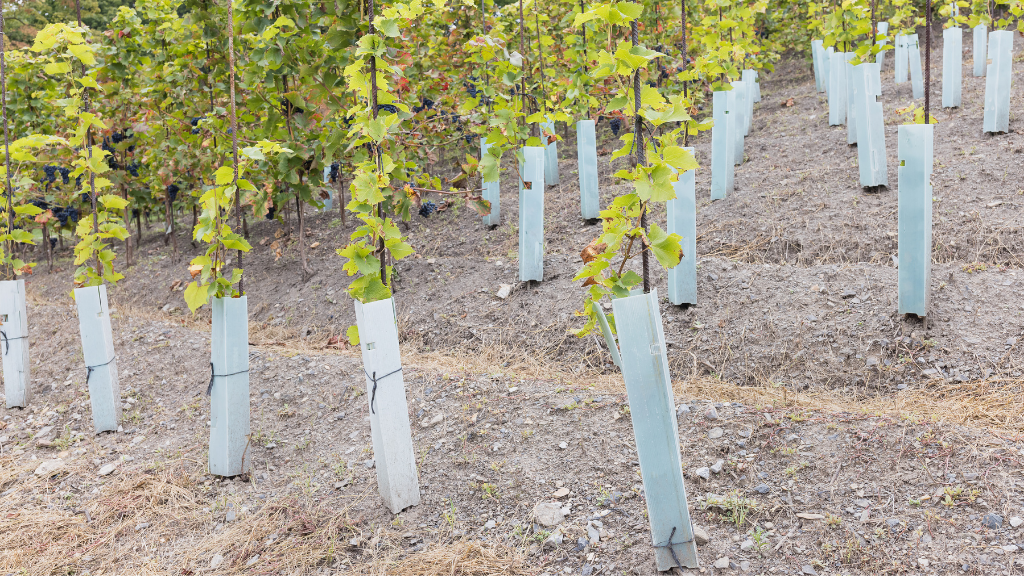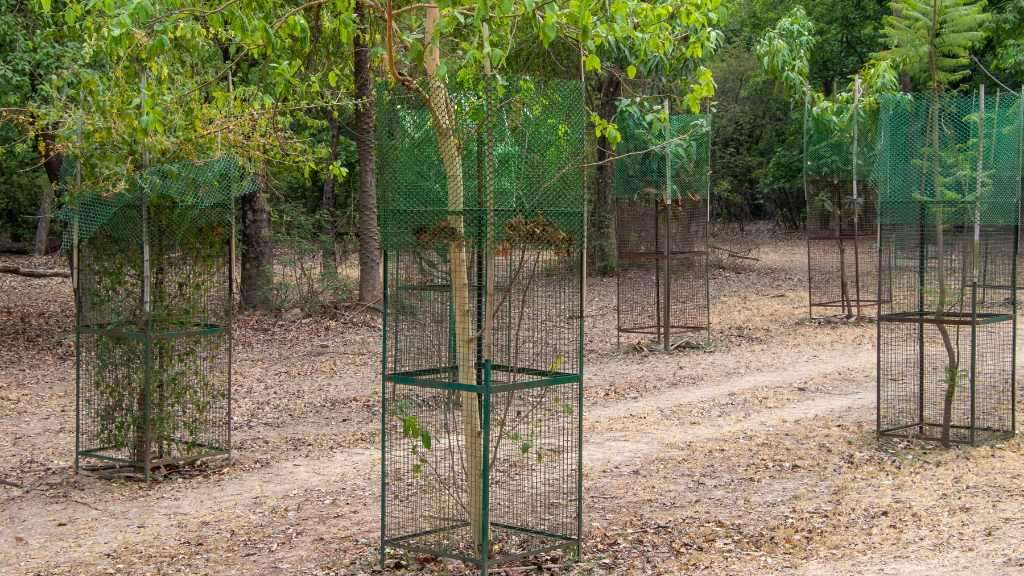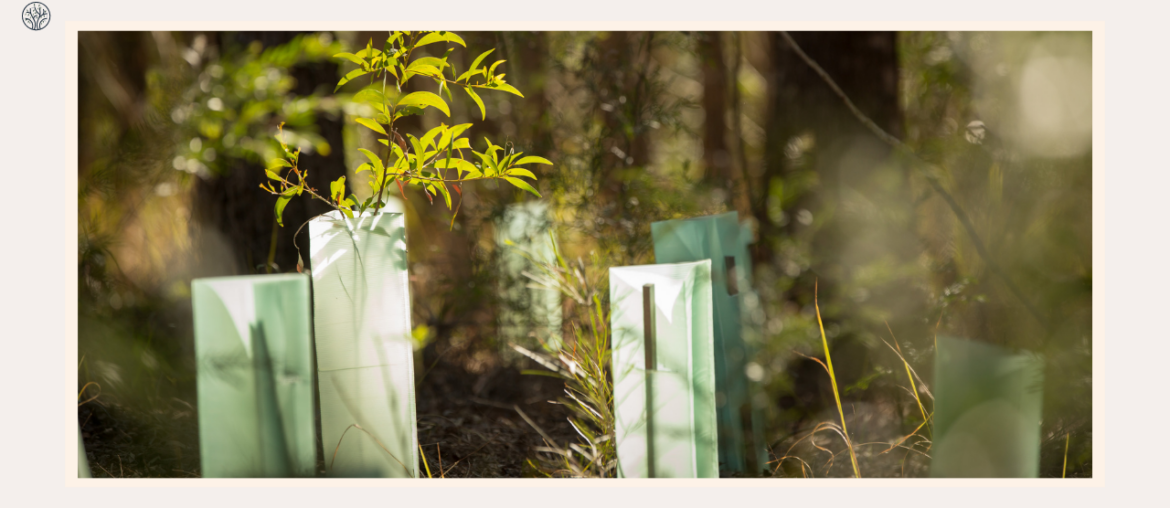To protect trees from pests, animals, and harsh weather conditions, many planters use plastic tree guards. However, plastic is a major source of environmental pollution, and it can harm the soil and wildlife around the trees. In this blog post, we will explore some eco-friendly alternatives to plastic tree guards that are better for the planet.
Are Tree Guards Important?
What are tree guards?

Tree guards are tubes or wires that are placed around the trunks of young trees to prevent them from browsing. People commonly use them in various types of tree-planting projects, such as forestry, conservation, and landscaping. They can help increase the chances of survival and growth for new trees during their first decade of life.
Why do we use plastic tree guards?
One of the main reasons why plastic tree covers are popular is their durability. Tree guards need to last for at least 10 years to protect young trees until they are strong enough. Plastic is a material that can resist these threats and last for a long time while also being very cheap.
Some people have tried using other alternatives that are more eco-friendly, such as biodegradable or recycled materials. However, these options often have drawbacks, such as being less durable, more expensive, or harder to find. They may also not provide enough protection for the trees in harsh environments.
What Are The Problems With Plastic Tree Guards?
Large-scale tree-planting schemes have been widely used plastic tree guards since the 1980s. According to the Woodland Trust, one of the largest tree-planting organizations in the UK, they use these for up to half of the 2.3 million saplings they plant each year.
While they may seem like a good way to protect young trees from harm, they also have many negative impacts on the environment and the trees themselves.
Environmental impact
Tree guards are rarely recycled or reused. Most of them end up being buried, burned, or dumped in landfills, where they can take hundreds of years to decompose. Some of them may also leak harmful chemicals into the soil and water, or be ingested by animals and birds. This contradicts the purpose of tree planting, which is to enhance the natural environment and biodiversity.
Eco footprint concerns
Another problem with plastic tree guards is that they have a high carbon footprint and resource use. They are made from fossil fuels and require a lot of energy to produce, transport, and dispose of. According to a study by the University of Southampton, the carbon footprint of planting a tree with a plastic guard is at least double that of planting a tree without one. This means that plastic tree tubes are contributing to greenhouse gas emissions and climate change, rather than mitigating them.
Detrimental effects on tree growth

Finally, while plastic tree guards are designed to protect young trees, they can also harm them as they grow older. Plastic tree guards can restrict the growth of the tree trunks, causing them to be deformed or damaged. They can also create wounds that invite pests and diseases. Plastic tree guards can also prevent the interaction between the trees and their surroundings, such as wind, sunlight, and wildlife.
What Are Some Eco-Friendly Alternatives To Plastic Tree Guards?
Fortunately, many companies and organizations have realized the harmful effects of plastic tree guards and are working hard to find a better solution.
Ideally, the best solution would be to eliminate the need for plastic tree guards or any tree guards at all. However, this is not feasible at the moment, due to the high costs and challenges of maintaining and protecting the trees without them.
Biodegradable tree guards
One of the potential solutions to reduce the environmental impact of plastic tree guards is to use biodegradable tree guards. These are tree guards that are made from materials that can decompose naturally, without requiring special treatment or processing. Many people prefer this option over plastic tree guards, as they are more eco-friendly and less wasteful.
However, biodegradable tree guards also have some drawbacks. One of them is that they are not very durable, hence they may not last long enough to protect the trees from harm. They are also more expensive than plastic tree guards, as they require more resources and labor to produce and maintain. Additionally, some biodegradable materials may not be suitable for certain climates or soils, and they may have negative effects on the ecosystem or tree health.
Another type of biodegradable tree guard is biodegradable plastic, which is a plastic that can break down into smaller pieces over time. However, this does not mean that biodegradable plastic is harmless for the environment or the trees. Since it may still release toxic chemicals into the soil and water, or be ingested by animals and humans. It may also create microplastics, which are tiny pieces of plastic that can accumulate in the environment and cause various problems. Therefore, biodegradable plastic is not a perfect solution either.
Bio-plastic tree guards
Bio-plastic and biodegradable plastic may sound similar, but they are actually different. Unlike biodegradable, bio-plastic is a type of plastic that is made from biological substances, such as corn starch or sugar cane, instead of petroleum. You may think that this is a perfect alternative to plastic tree guards, but it is not that simple.
One of the problems with bio-plastic tree guards is that they are not biodegradable, which means they do not decompose naturally in the environment. They are only compostable, which means we need to send them to a special industrial composting facility to break them down. This adds to the cost and the carbon footprint of using bio-plastic tree guards, as they require more transportation and processing. Therefore, using bio-plastic tree guards can make the tree planting process more expensive and less eco-friendly.
Getting rid of tree guards
The best solution would be to eliminate the need for tree guards altogether. However, this is not realistic, as we have discussed earlier. There are many factors that threaten the survival and growth of young trees, such as animals, insects, weather, and human activities. Therefore, we need to find ways to reduce the dependence on individual tree guards and use other methods to protect the trees. Some of these methods are:
- Fencing off the area to prevent wild animals from entering and damaging the trees. We can do this with metal or wooden fences, or with natural barriers such as hedges or rocks.
- Managing forests to reduce the need to plant new trees. We need to properly prevent deforestation, promote natural regeneration, and enhance forest health and diversity.
- Controlling wildlife populations that pose a threat to the trees.
- Planting protective plants around saplings can deter or repel animals and insects. For example, some plants have thorns, spines, or chemicals that can make them unpalatable or harmful to herbivores.
Organizations That Are Trialing Plastic-Free Options
There are some organizations that are trialing plastic-free options for protecting young trees and finding positive results. Here are some examples of organizations that are leading the way in this field:
- The Woodland Trust: The Woodland Trust is the largest woodland conservation charity in the UK, and it has announced that it is aiming to stop using plastic tree guards by the end of 2021. It is trialing plastic-free options at its Avoncliff site in Wiltshire, including cardboard and British wool. It is also part of the Forestry Plastics Working Group, which aims to reduce plastics across the whole of the forestry and conservation sector.
- The National Trust: The National Trust is a conservation organization that manages over 250,000 hectares of land in the UK, and it has pledged to plant 20 million trees by 2030. It is trialing plastic-free options at its Wallington site in Northumberland, including using crates made from locally felled diseased trees, using existing shrubs to protect young trees, and using cardboard tubes.
- Greening Australia: Greening Australia is a restoration organization that works across Australia to conserve and restore landscapes and ecosystems. It has published 10 tips for plastic-free planting, such as starting with seeds instead of seedlings, making pots from paper, using plant tags from natural materials, guarding seedlings with wire or mesh, and buying tools once and repairing them forever.
Conclusion
Plastic tree guards are not only unnecessary but also harmful to the environment and wildlife. There are many eco-friendly alternatives that you can use to protect your young trees from browsing animals without creating plastic waste. By choosing these alternatives, you can contribute to a greener future for our planet.
I hope you enjoyed this article and learned something new. If you have any questions or comments, feel free to leave them below. Thanks for reading!









